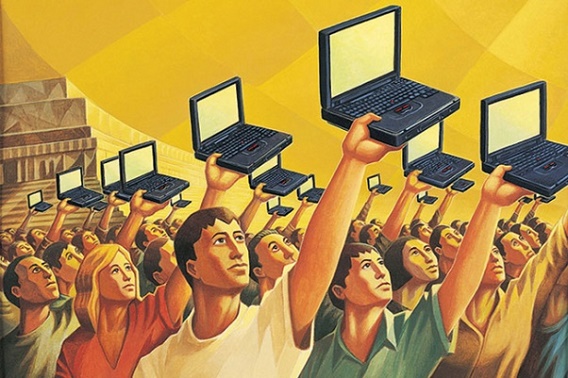
To misquote a classic Olivia Newton John ditty from the early eighties, ‘let’s get digital’. This is a common refrain across the world as organisations look to harness latest channels and technology to streamline internal procedures and deliver better services to customers and clients. My recent projects for the International Labour Organization (ILO) have honed on a related hot topic: How can digital tools enhance the ability of representative business organisations to influence policy and public opinion and lead high-impact advocacy campaigns?
Based on the insight and feedback from employers’ organisations, business leaders and public affairs professionals from across the globe, here are six areas of opportunity for re-energising advocacy and campaigning activities in the digital era:
1. Boosting the evidence base (show me the honey!) – Creating a strong evidence base is the honey of most effective advocacy campaigns; this is the sweet spot that supports calls to action and makes change happen. Using online tools and platforms to better capture data and insight of business leaders is just one manifestation of how digitalization can support advocacy activities. The work of representative organisations over the course of the COVID-19 crisis has provided a great example of this, with data collated in a matter of days and used to inform business support measures and other government responses. Online events and webinars are a means of generating ‘live’ feedback and avoiding the ‘survey fatigue’ caused by endless e-mail surveys.
2. Spreading the word and telling good stories – Digital channels are an opportunity to ramp up data collection and generate robust data; they are also a means of disseminating stories that demonstrate the positive role of business in society. Again, the Pandemic has provided practical examples of this, with business organisations showcasing activities of employers going the extra mile to help their local community and to work with national and regional government to make a positive impact during the crisis. As part of this, advocacy activities and reputation-enhancing campaigns are increasingly making use of video as a means of making an emotional impact and of reaching out to a larger audience via social media channels.
3. Engaging directly with policymakers and influencers – Digital channels are a means of engaging directly with political figures, journalists and other influencers. Not all stakeholders and target policymakers will be active on social media, but many are and digital channels are now an intrinsic part of communication strategies. Journalists in particular increasingly use Twitter and other tools to monitor responses to government announcements and to identify points of view that are worth covering.
4. Bringing business leaders closer to the policy arena – Digitalization is creating new ways of facilitating direct dialogue between members and policy makers. Digital channels were used at the height of the COVID19 crisis to ensure that members could relay their concerns and immediate priorities to government officials; this in turn helped to shape support packages for businesses across different sectors. On a purely practical level, harnessing digital channels facilitates the engagement process as it is easier to find diary time for online gatherings where travel time and meeting space do not come into play.
5. Collating insight and intelligence – In the same way that employer organisations use CRM systems to log regularly updated information on the businesses they represent, the opportunity is there to collate better intelligence on policy stakeholders through regularly updated records of conversations, interventions, and public statements. There will often be multiple contacts within different government departments as well as within other stakeholders; ensuring that these records are up to date ensures that campaigning activities and contact strategies are joined up. Over time, this can be built on to generate data on common responses from different government departments and outcomes from different types of advocacy approaches. This will also help to address the perpetual challenge of measuring the impact of advocacy and campaigning activities.
6. Taking a lead on creating a sustainable digital economy – The digital revolution provides new tools and a new ‘form’ for employer organisations to ramp up advocacy and campaigning activities. It also provides substance for future campaigning and positioning initiatives. Nurturing a sustainable digital economy that provides opportunities for all and promotes business growth and job creation is a priority in most countries. Employer organisations are seizing the opportunity to play a leadership role here as well as in related areas such as the future of work, pre-empting new skills needs and the ethical adoption of Artificial Intelligence (AI) and automation.
According to a McKinsey survey, the COVID-19 crisis has sped-up the adoption of digital technologies by several years. For all of those involved in advocacy and public affairs, new tools and channels will inevitably impact on the campaigning ecosystem; the key is to stay up to speed through regular peer-to-peer exchanges and training programmes such as those offered by the ILO’s International Training Centre. Sharing innovative approaches from across the world is one of the best ways of staying in step and ensuring that campaigning and advocacy activities have the kind of pumped-up and high-energy vibe that Olivia would approve of.

